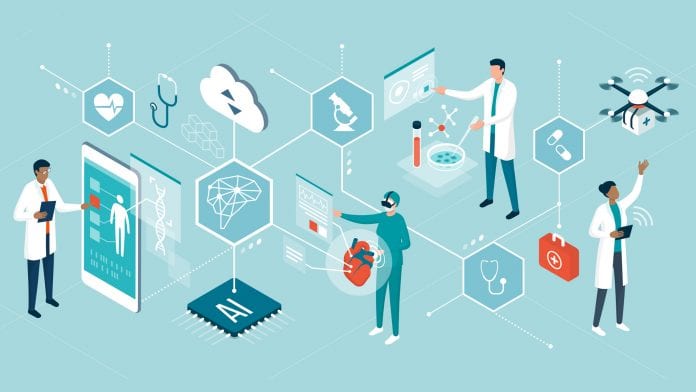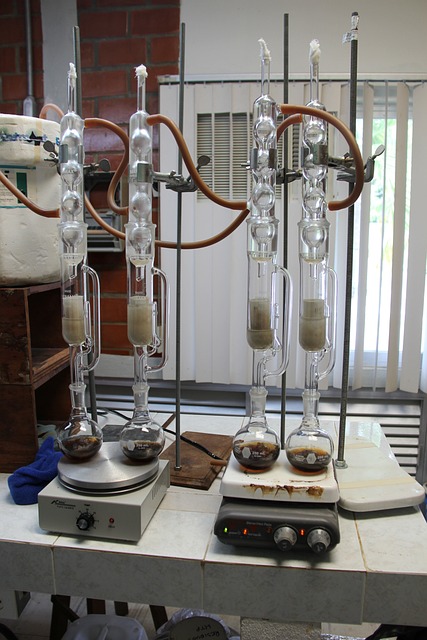
Nanotechnology has the potential to revolutionize healthcare by offering precise and targeted drug delivery, advancements in medical imaging, enhanced tissue engineering, personalized treatment plans, and early disease detection and intervention.
This article explores the immense potential of nanotechnology in medicine, focusing on its role in nanoparticle drug delivery and diagnostics.
By examining the benefits and usage of nanomaterials in today's healthcare setup, we can understand how these nano-miracles have the power to transform healthcare outcomes for patients worldwide.
Key Takeaways
- Nanotechnology has the potential to revolutionize healthcare by offering precise and targeted drug delivery, minimizing adverse effects on healthy tissues, and enhancing therapeutic efficacy.
- Nanoparticle drug delivery systems can increase drug concentration at the target location, reduce systemic toxicity, and personalize treatment plans based on genetic profiling.
- Nanotechnology-based diagnostics, such as imaging techniques and genetic testing using nanoparticles, can improve diagnostic accuracy, enable early disease detection, and guide precise treatment planning.
- The usage of nanomaterials in healthcare, including biomimetic scaffolds and nanomaterials for tissue regeneration, can advance regenerative medicine and improve patient outcomes.
Precision and Targeted Drug Delivery
Precision and targeted drug delivery is a promising application of nanotechnology in medicine. It allows for the specific targeting of diseased cells while minimizing adverse effects on healthy tissues.
Nanoparticle design plays a crucial role in this process by enabling controlled release and enhanced therapeutic efficacy. Nanoparticles can be tailored to carry drugs or biomolecules, such as antibodies or nucleic acids, which can specifically bind to disease markers on the surface of cells.
These nanoparticles can then be delivered directly to the affected site, increasing drug concentration at the target location and reducing systemic toxicity. Moreover, their small size allows them to penetrate cellular barriers more effectively, facilitating drug uptake by cells.
The ability to precisely deliver therapeutics through nanotechnology holds great potential for improving treatment outcomes and patient well-being in various diseases, including cancer and infectious diseases.
Advancements in Medical Imaging
Advancements in medical imaging have significantly enhanced the diagnostic capabilities of healthcare systems. These improved diagnostics are primarily attributed to advancements in various imaging techniques.
Here are four key advancements in medical imaging:
High-resolution imaging: The development of high-resolution imaging technologies such as magnetic resonance imaging (MRI) and computed tomography (CT) has allowed for detailed visualization of anatomical structures, aiding in the detection and characterization of diseases.
Functional imaging: Techniques like positron emission tomography (PET) and single-photon emission computed tomography (SPECT) provide insights into physiological processes within the body, enabling early disease detection, treatment planning, and assessment of treatment response.
Molecular imaging: Advances in molecular imaging allow for the visualization and tracking of specific molecules or cellular interactions within tissues, facilitating targeted drug delivery and personalized treatments.
Real-time imaging: Real-time imaging techniques like ultrasound provide dynamic views of organs and tissues during procedures, assisting surgeons with accurate guidance and minimizing invasiveness.
These advancements not only improve diagnostic accuracy but also enable earlier disease detection, more precise treatment planning, and better patient outcomes.
Enhanced Tissue Engineering
Enhanced tissue engineering has emerged as a promising field in biomedical research, aiming to develop functional and viable tissues for various applications in regenerative medicine and transplantation.
This innovative approach involves the use of biomimetic scaffolds, which mimic the structure and function of native tissues, providing mechanical support and instructive cues to guide cell growth and differentiation. These scaffolds are typically made from nanomaterials such as polymers or ceramics, which possess unique properties at the nanoscale that are essential for tissue regeneration.
Nanotechnology enables precise control over scaffold composition, porosity, and surface topography, allowing researchers to tailor these parameters to specific tissue types. Furthermore, nanoparticles can be incorporated into these scaffolds for controlled drug release or enhanced cellular signaling.
The integration of nanotechnology with tissue engineering holds great promise for advancing regenerative medicine and improving patient outcomes by providing functional replacement tissues.
Personalized Treatment Plans
Personalized treatment plans have become a crucial component in modern healthcare, as they allow for tailored interventions based on individual patient characteristics and needs. One of the key advancements enabling personalized treatment plans is genetic profiling. By analyzing an individual's genetic makeup, healthcare professionals can gain valuable insights into their disease susceptibility and response to specific treatments. This information allows for the development of individualized therapy options that are more likely to be effective and minimize adverse effects.
Nanotechnology plays a significant role in facilitating personalized treatment plans by providing targeted drug delivery systems. Nanoparticles can be designed to carry therapeutic agents directly to affected tissues or cells, increasing drug efficacy while minimizing side effects. Additionally, nanotechnology-based diagnostics enable early detection of diseases through highly sensitive and specific tests. This early detection enables timely intervention with personalized treatment plans tailored to the patient's unique needs.
Incorporating nanomaterials into today's healthcare setup offers numerous benefits, including improved patient outcomes, reduced healthcare costs, and enhanced quality of life. As our understanding of genetics continues to advance and nanotechnology evolves, the potential for even more precise and effective personalized treatment plans will undoubtedly revolutionize healthcare practices worldwide.
Early Disease Detection and Intervention
Early disease detection and intervention is a critical aspect of modern healthcare, allowing for timely identification and treatment of illnesses before they progress to more advanced stages. Nanotechnology has emerged as a promising tool in this area, offering new opportunities for early diagnosis and intervention.
One application is genetic testing, which involves the analysis of an individual's DNA to identify genetic variations associated with specific diseases. Nanoparticles can be used to enhance the sensitivity and accuracy of these tests, enabling the detection of even small amounts of genetic material.
Additionally, nanotechnology has enabled the development of telemedicine platforms that allow for remote monitoring and real-time diagnosis of patients. This technology facilitates early intervention by enabling healthcare professionals to detect signs of disease progression at an early stage, thereby improving patient outcomes.
Incorporating nanotechnology into diagnostic methods and telemedicine platforms holds great potential for revolutionizing healthcare by enabling early disease detection and intervention.
Frequently Asked Questions
How does nanoparticle drug delivery work and what are its advantages over traditional drug delivery methods?
Nanoparticle drug delivery involves the use of nanoparticles to transport drugs to specific locations in the body. It offers advantages over traditional methods such as improved drug stability, controlled release, targeted therapy, and reduced side effects.
What are some of the latest advancements in medical imaging using nanotechnology?
Nanoparticle contrast agents and nanoparticle-based theranostics are recent advancements in medical imaging using nanotechnology. These technologies offer improved sensitivity, specificity, and multiplexing capabilities for early disease detection and personalized medicine applications in healthcare settings.
How can nanomaterials be used in tissue engineering and what benefits do they offer?
Nanomaterials in tissue engineering offer several benefits, including enhanced cell adhesion, proliferation, and differentiation. They can also mimic the extracellular matrix, provide controlled drug release, and promote tissue regeneration, making them valuable tools in regenerative medicine.

What is the significance of personalized treatment plans in healthcare and how can nanotechnology contribute to their development?
Personalized treatment plans in healthcare are significant as they cater to individual needs. Nanotechnology contributes to their development by enabling targeted drug delivery and diagnostics, enhancing efficacy and accuracy for improved patient outcomes.
How does early disease detection and intervention using nanotechnology improve patient outcomes and what are some specific examples of its application in healthcare?
Nanotechnology in disease diagnosis enables early detection and intervention, improving patient outcomes. Targeted nanoparticle therapy delivers drugs directly to diseased cells, minimizing side effects. Examples include using nanoprobes for imaging and nanoparticles for drug delivery in cancer treatment.
 GadgetsProduct ReviewsSmart DevicesDronesVirtual DevicesPrivacy PolicyTerms And Conditions
GadgetsProduct ReviewsSmart DevicesDronesVirtual DevicesPrivacy PolicyTerms And Conditions
